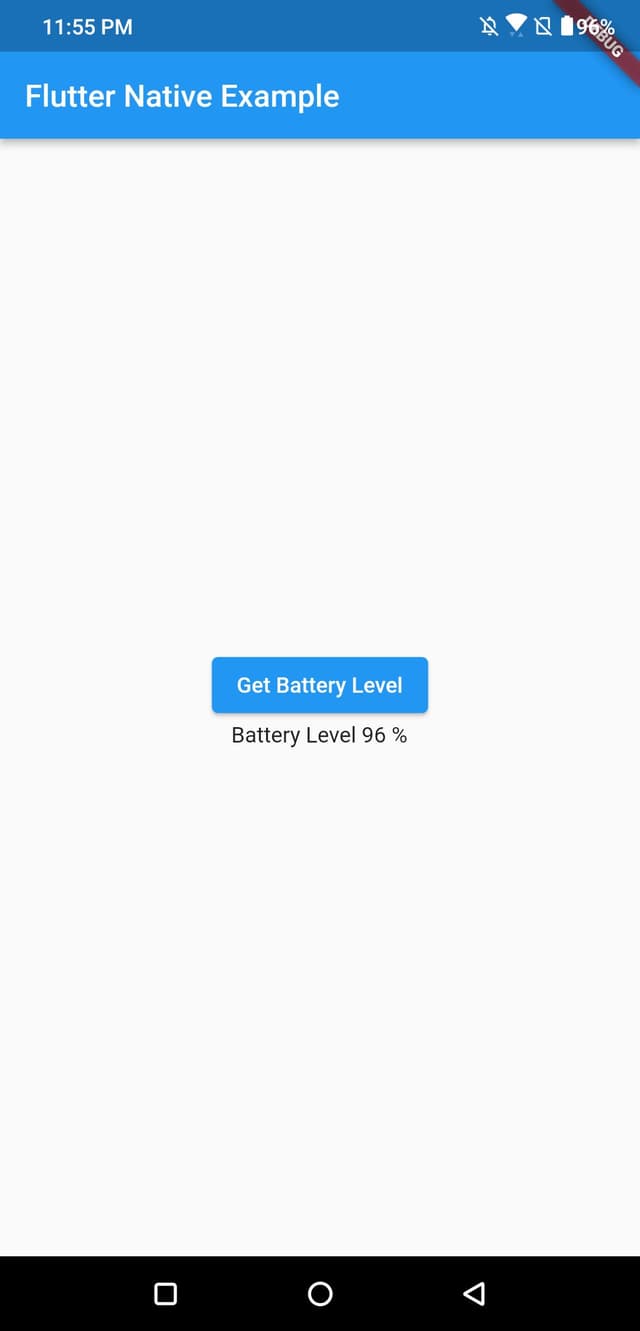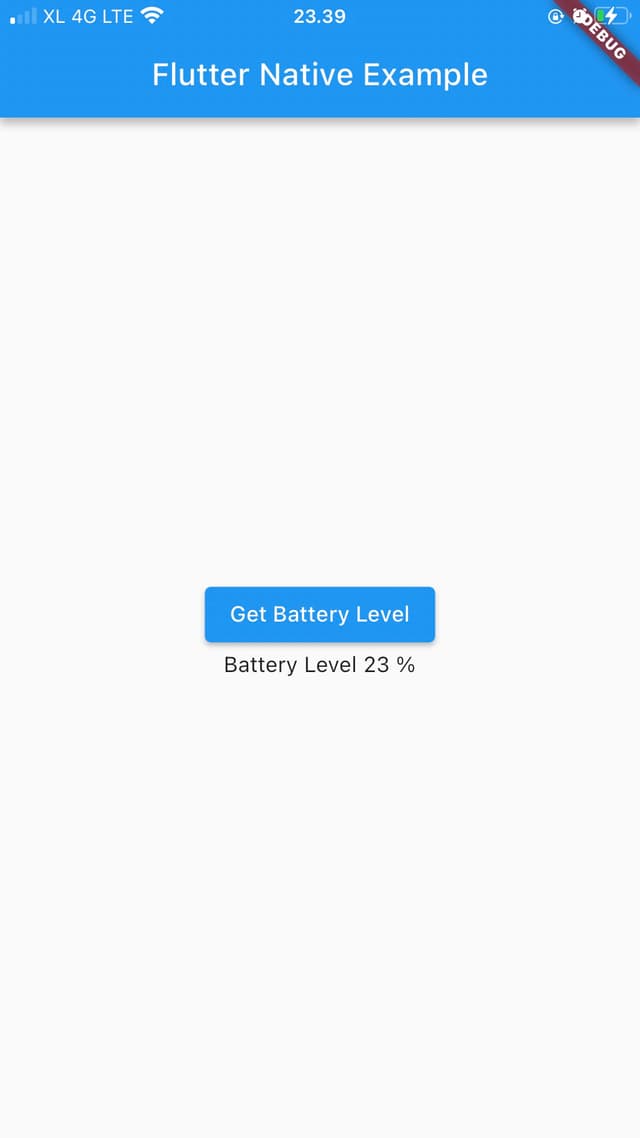How to use Native Service in Flutter
- Published At 18 August 2024
- 5 min read
- ––– Views
Flutter's seamless integration with native platforms is one of its standout features, enabling developers to harness platform-specific functionalities while enjoying the benefits of cross-platform development. This integration is made possible through Platform Channels and Dart's Foreign Function Interface (FFI).
Platform Channel
Platform Channels are a crucial feature in Flutter, serving as a bridge between Dart and native platform code. They enable Flutter apps to communicate with the underlying platform, whether it's Android, iOS, macOS, Linux, or Windows. This communication is essential for accessing native functionalities like cameras, GPS, sensors, and other platform-specific features that aren't directly accessible through Flutter.
Platform Channel offers three main types of communication methods:
- Method Channel: This is used for asynchronous method invocations. It's handy when you need to perform a specific function and return a result, such as fetching sensor data, checking battery status, or processing data using native capabilities.
- Event Channel: This is used to create a data stream from native code to Dart. It's ideal for listening to continuous or periodic native events, like sensor readings or location updates.
- BasicMessageChannel: This is used for asynchronous message exchanges, suited for simple communication. It supports various data serialization formats and codecs, such as JSON, binary, or custom-defined formats.
Now, let’s build a simple application where the Flutter part (Dart code) communicates with the native platform (Android & iOS) to retrieve the device’s battery level. We'll be using MethodChannel in Flutter.
Android platform
Define the MethodChannel in Flutter
import 'package:flutter/foundation.dart';
import 'package:flutter/services.dart';
class BatteryService {
/// prefix the channel name with a unique 'domain prefix'
static const methodChannel =
MethodChannel('com.example.flutter_native_example/battery');
static Future<int?> getBatteryLevel() async {
try {
final batteryLevel =
await methodChannel.invokeMethod<int>('getBatteryLevel');
return batteryLevel;
} catch (e) {
debugPrint("Error: $e");
return null;
}
}
}Handling the Method Call in Native Android (Kotlin)
In our Android project, we need to override the configureFlutterEngine method in our MainActivity or the relevant activity.
package com.example.flutter_native_example
import android.content.Context
import android.content.ContextWrapper
import android.content.Intent
import android.content.IntentFilter
import android.os.Build.VERSION
import android.os.Build.VERSION_CODES
import android.os.BatteryManager
import androidx.annotation.NonNull
import io.flutter.embedding.android.FlutterActivity
import io.flutter.embedding.engine.FlutterEngine
import io.flutter.plugin.common.MethodChannel
class MainActivity : FlutterActivity() {
private val CHANNEL = "com.example.flutter_native_example/battery"
override fun configureFlutterEngine(@NonNull flutterEngine: FlutterEngine) {
super.configureFlutterEngine(flutterEngine)
MethodChannel(flutterEngine.dartExecutor.binaryMessenger, CHANNEL).setMethodCallHandler {
call,
result ->
if (call.method == "getBatteryLevel") {
val batteryLevel = getBatteryLevel()
if (batteryLevel != -1) {
result.success(batteryLevel)
} else {
result.error("UNAVAILABLE", "Battery level not available.", null)
}
} else {
result.notImplemented()
}
}
}
private fun getBatteryLevel(): Int {
val batteryLevel: Int
if (VERSION.SDK_INT >= VERSION_CODES.LOLLIPOP) {
val batteryManager = getSystemService(Context.BATTERY_SERVICE) as BatteryManager
batteryLevel = batteryManager.getIntProperty(BatteryManager.BATTERY_PROPERTY_CAPACITY)
} else {
val intent =
ContextWrapper(applicationContext)
.registerReceiver(null, IntentFilter(Intent.ACTION_BATTERY_CHANGED))
batteryLevel =
intent!!.getIntExtra(BatteryManager.EXTRA_LEVEL, -1) * 100 /
intent.getIntExtra(BatteryManager.EXTRA_SCALE, -1)
}
return batteryLevel
}
}Call the method from Flutter
We can call getBatteryLevel from our Flutter code to retrieve the battery level from the native platform.
import 'package:flutter/material.dart';
import 'package:flutter_native_example/battery_service.dart';
void main() {
WidgetsFlutterBinding.ensureInitialized();
runApp(const MainApp());
}
class MainApp extends StatefulWidget {
const MainApp({super.key});
@override
State<MainApp> createState() => _MainAppState();
}
class _MainAppState extends State<MainApp> {
String? batteryLevel;
@override
Widget build(BuildContext context) {
return MaterialApp(
home: Scaffold(
appBar: AppBar(
title: const Text("Flutter Native Example"),
),
body: Center(
child: Column(
mainAxisAlignment: MainAxisAlignment.center,
children: [
ElevatedButton(
onPressed: () async {
final result = await BatteryService.getBatteryLevel();
setState(() {
batteryLevel = "$result";
});
},
child: const Text("Get Battery Level"),
),
Text("Battery Level ${batteryLevel ?? ''} %"),
],
),
),
),
);
}
}Run the App
To run our app on an Android device, the getBatteryLevel method will invoke the native platform code, and the battery level will be fetched. Always ensure that the channel name matches between the Dart code and the native code.

iOS Platform
Run this command to open the Xcode project
open ios/Runner.xcworkspace
Next, open the appDelegate.swift file located under Runner > Runner in the Project Navigator.
Handling the Method Call in Native iOS (Swift)
Override the application function and create a FlutterMethodChannel tied to the same channel name as before. Then, add the Swift code that uses iOS battery APIs to retrieve the battery level.
import UIKit
import Flutter
@UIApplicationMain
@objc class AppDelegate: FlutterAppDelegate {
override func application(
_ application: UIApplication,
didFinishLaunchingWithOptions launchOptions: [UIApplication.LaunchOptionsKey: Any]?
) -> Bool {
let controller : FlutterViewController = window?.rootViewController as! FlutterViewController
let batteryChannel = FlutterMethodChannel(name: "com.example.flutter_native_example/battery", binaryMessenger: controller.binaryMessenger)
batteryChannel.setMethodCallHandler({
[weak self] (call: FlutterMethodCall, result: FlutterResult) -> Void in
guard call.method == "getBatteryLevel" else {
result(FlutterMethodNotImplemented)
return
}
self?.receiveBatteryLevel(result: result)
})
GeneratedPluginRegistrant.register(with: self)
return super.application(application, didFinishLaunchingWithOptions: launchOptions)
}
private func receiveBatteryLevel(result: FlutterResult) {
let device = UIDevice.current
device.isBatteryMonitoringEnabled = true
if device.batteryState == UIDevice.BatteryState.unknown {
result(FlutterError(code: "UNAVAILABLE",
message: "Battery level not available.",
details: nil))
} else {
result(Int(device.batteryLevel * 100))
}
}
}Run our App
Now, run our app on an iOS device. If you're using the iOS simulator, keep in mind that it doesn’t support the battery API

Here's the full Source Code
Conclusions
With Flutter, we can seamlessly integrate with the native platform. Platform Channels bridge the gap between Dart and native code, allowing Flutter apps to communicate with the underlying platform. Additionally, we can use Pigeon, Dart FFI (Foreign Function Interface), FFIgen, and JNIgen (Java Native Interface Generator) to further simplify the process of creating bindings and facilitating communication between Dart and native code.